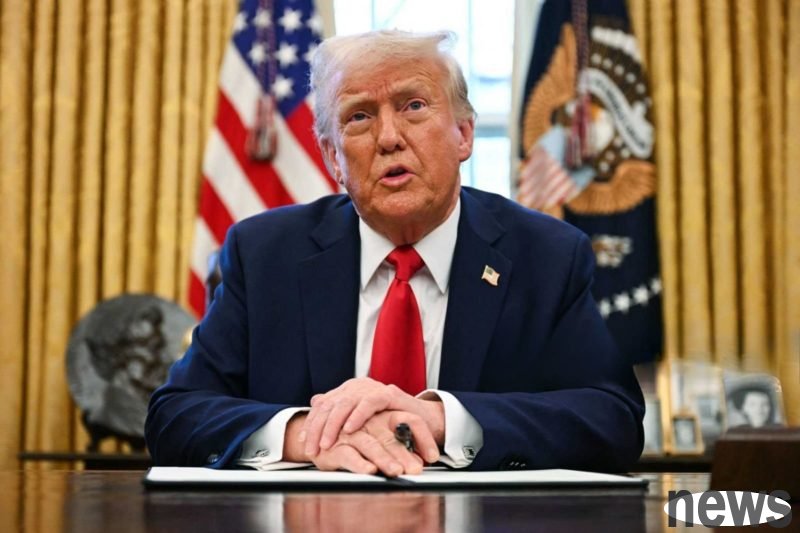US President Trump finally revealed that Taiwan's taxes were 20%, higher than Japan and South Korea's 15% and Thailand's 19% and hold the same tax rate as Vietnam. In response to this, President Tsing-Te also issued a document earlier th...

US President Trump finally revealed that Taiwan's taxes were 20%, higher than Japan and South Korea's 15% and Thailand's 19% and hold the same tax rate as Vietnam. In response to this, President Tsing-Te also issued a document earlier that Taiwan's current "temporary tax responsibilities" are 20%, and a subsequent agreement is expected to adjust the tax rate again.
However, what the outside world expects at present is that what additional conditions are Taiwan changing from 32% to 20% tax surveillance, both Trump and Taiwan have not announced yet.
President Feng Qingte pointed out that due to the procedural arrangements of the debate, Taiwan and the United States have not yet completed the general meeting, and the two sides will continue to discuss supply link cooperation and related issues related to Article 232. Technical consultations have been completed, and four tasks will be implemented to protect national interests, industrial interests, national health, and ensure food safety. Although the tax rate announced by the US today is only a temporary measure, the political team will continue to compete for a reasonable tax rate and complete the final checkpoint for the tax judgment.
If we look at the conditions of Japan and South Korea's tax rate reduction, it is likely that the direction of the negotiations, including Taiwanese companies that must strengthen their investment in the United States, open markets for automobiles, rice or some agricultural products, and promise American energy products. In addition, since President Tsing-te said that supply link cooperation and consultations on terms 232 related issues mean that semiconductors and related supply links in Taiwan are likely to be surrounded.
Japan 15% replacement conditions:
Japan will invest $55 billion in the United States, with at least 90% of its investment returns to the United States, and Trump did not specify the details. Japan opens trades including cars, trucks, rice and some agricultural products. The United States and Japan will reach an agreement on the purchase of liquefied natural gas. Japan's chips and medicines exported to the United States will be subject to the most favorable country treatment.Korea 15% replacement conditions:
South Korea provides US$35 billion in investment to the United States for various investment plans selected by Trump. Of which, US$20 billion is used in semiconductors, nuclear power, batteries, biological and other fields, and US$15 billion will be used specifically for shipbuilding cooperation planning. Committed to purchase an additional US$10 billion of US energy products, such as liquefied natural gas (LNG), etc. South Korea has fully opened its market, allowing American automobiles, cargoes and agricultural products to be imported at zero taxes The United States will be subject to 15% tax on South Korea, and the United States will not be subject to any tax on courses.
The US Term 232 currently covers six major categories including steel iron and aluminum, automobiles and parts, semiconductors, medicines, key minerals, and cargoes. Trump has previously increased the tax rate for steel iron, aluminum and copper products to 50%. Currently, the US external resources are also expected to be issued as early as mid-August.
At the same time, Taiwan has determined the tax rate, which means that Taiwanese enterprises have entered a new round of adjustment period. Hong Yuting, a senior executive of the tax-taking officer of the diligent public, said that most of the products exported by Taiwan, Japan and South Korea to the United States are in the scope of Terms 232, and are also major countries in the same semiconductor supply chain. The tax rate of Terms 232 has not been announced yet, and subsequent development may also shift the changes in the semiconductor supply chain, especially countries that have not reached a trade agreement with the United States.
Hong Yuting believes that many of the key production elements in the semiconductor supply chain are not covered by the scope of clause 232, such as special chemicals used in semiconductor production processes, and this type of product will be affected by the tax rate relative to the relevant tax rate. If the applicable tax rates for different regions of origin are different, it may affect the industry layout.
Hong Yuting suggested that semiconductor suppliers generally make better profits and are more specific to other industries, and can also transfer costs to customers. Even if there are still uncertainties in semiconductor taxes, enterprises expect to accelerate the adjustment of semiconductor supply chains to produce production bases, and supply chains will be more decentralized. At the same time, we should not only focus on US trade and tax-related policies, but also on the upstream and downstream of the overall supply chain, including the European Union and Asian countries, as a result of Trump's tax-related changes.
Extended reading: Legal person: 20% tax rate for Taiwan is a tax-related outpost, and it will be the focus of arbitrage Taiwan's 20% tax liability is higher than that in Japan and South Korea, and Tsing-te said this is "temporary tax liability"